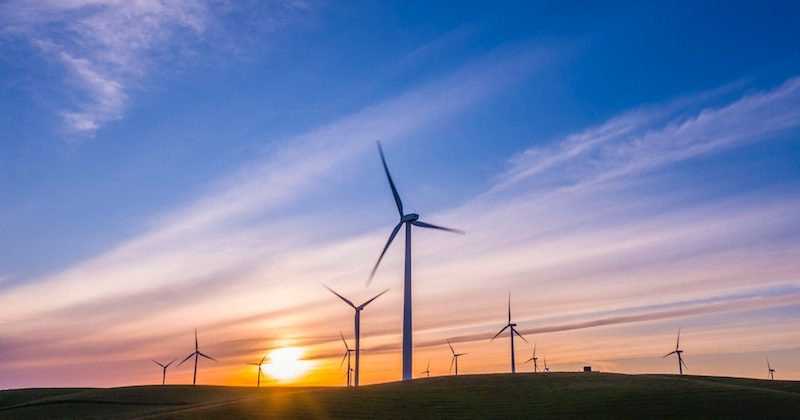There has been a lot of talk about the changes in weather, depletion of the ozone layer and the general deterioration of the earth since the 1990s. As a result of this, there have been a lot of policy changes in various parts of the world in order to ensure that the environment is preserved. Energy policy changes have been made to ensure that the climate crisis does not worsen.
In the past 5 years, East Africa has emerged as a global leader in the implementation of renewable energy projects. Some of East Africa’s largest clean energy projects include a 280 MW geothermal project in Olkaria and a 310 MW wind farm in Turkana, Kenya. Ethiopia has embarked on the 6,000 MW Grand Renaissance Dam hydropower project, while Uganda has implemented the 600 MW Karuma and the 183 MW Isimba hydropower projects.
Rwanda and Burundi have also made strides in the renewable energy sphere with Rwanda having a 100 MW methane gas power project at Lake Kivu, the 28 MW Nyaborongo hydropower project and the 8.5 MW Rwamagana solar farm. It is also noted that Burundi has added 7.5 MW to its grid through the Mupuga Solar Farm Project. The projects above constitute the major energy renewable projects across East Africa. Several small-scale clean energy projects particularly in the solar energy field are dotted across the East African region.
The Kenyan Government seems committed to promoting electricity generation from renewable energy sources. The Energy Act, Act No. 12 of 2006 (the Energy Act) requires the Cabinet Secretary in charge of energy to develop and manage a prudent national energy efficiency and conservation programme.
The Energy Act defines renewable energy as energy from all non-fossil sources including, but not limited to biomass, geothermal, small hydropower, solar, wind, sewage treatment and plant gas.
Kenya’s Sessional Paper No. 4 on Energy (the Sessional Paper) encourages implementation of indigenous renewable energy sources to enhance the country’s electricity supply capacity. The Sessional Paper is implemented through the Energy Act of 2006, which provides for mitigation of climate change, through energy efficiency and promotion of renewable energy. In 2008, the Government of Kenya (GoK) adopted the so- called “Feed-in Tariffs Policy” through the Feed in Tariffs (FiTs) policy of 2008 (revised 2012) (FiT Policy) to attract private investment into the renewable energy sector. The FiT Policy guarantees fixed rates and connection to the grid for electricity generated from renewable energy sources. Projects are eligible for conditions of the FiT Policy if they have a certain size and are based on wind, biomass, small hydropower, geothermal, biogas and solar. Below is a quick run through on the progress being made on the different types of renewable energy sources in Kenya.
Solar
Solar energy can be used for lighting bulbs, heating houses and water, drying and generating electricity. Kenya’s location astride the equator gives it a unique opportunity to invest in solar energy since the country experiences high radiation. This makes solar energy an ideal source of energy.
Many Kenyans have opted to using this form of energy on a full time basis because of its cost effective nature. The use of solar energy is also common in large buildings and industrial plants that require lot of energy for the nature of their work. The Energy (Solar Water Heating) Regulations, 2012 requires all premises within the jurisdiction of a local authority with hot water requirements of a capacity exceeding 100 litres per day to install and use solar heating systems. Contravention of this provision attracts a fine of KES 1 million or imprisonment for a term not exceeding 1 year or both. Developers of a housing estate, architects, engineers and an owner of premises are advised to keep in mind the provisions of these particular Regulations.
It should be noted that one needs to be licensed by the Energy Regulatory Commission (ERC) as a solar water heating system technician or a contractor before undertaking any solar water heating system installation work.
Wind
The Government of Kenya together with various project financiers have agreements for the funding and construction of the Kinangop Wind Park and Lake Turkana Wind Farm. Preparations for a feasibility study for 12 wind sites are also underway together with the continued expansion of the Ngong wind power project. There are also steps being taken towards the implementation of a grid management program to assist Kenya in managing integration of intermittent renewable energy. Kenya has a high installed wind energy capacity to the grid. Exploitation of wind energy in Kenya has however been hampered by high capital costs and the lack of sufficient wind regime data among other factors.
Biomass and biogas
There are 14 prospective geothermal sites spread out in the Rift Valley. There are also ongoing upscaling projects for the smaller biogas plants for agricultural producers and processors for example, supporting co-generation by Mumias Sugar (one of Kenya’s largest sugar producers). There is also support for an initiative for the improved cook stoves for households and institutions. With regards to biogas, Kenya has various organisations supporting market transformation initiatives for efficient biomass stoves for institutions and SMEs with the help of the United Nations Environment Programme (UNEP) who are also providing support for cogeneration market in Eastern and Southern Africa, and the United Nations Development Programme who are promoting public-private partnerships in sustainable charcoal production.
Hydro
There is a community-based mini hydropower development project in upper Tana River basin where there is a construction of 7 mini-hydropower plants. The International Finance Corporation is providing advisory services on small/mini-hydropower development as well as risk mitigation schemes to commercial banks investing in small hydropower plants.
Geothermal
Kenya’s Energy Policy, 2012 estimates geothermal potential within the Great Rift Valley at between 7,000 MW and 10,000 MW. The Geothermal Development Company (GDC), a state-owned special purpose vehicle (SPV) established for the development of geothermal resources in Kenya is in the process of developing 90 MW of geothermal power in the Menengai field within the Rift Valley. In addition to supporting the GDC, the GoK is also expected to create a directorate to oversee renewable energy policy and a renewable energy lead agency to undertake the promotion of this resource, with a target 5,000 MW of geothermal power expected by 2030. There is also support by various stakeholders for the Olkaria I, II, III and IV expansion projects. The UNEP is providing technical assistance for surface exploration of geothermal energy through African Rift Geothermal Development.
Like all energy projects, renewable energy projects under a capacity of 1 MW do not need a licence or permit, those over 1 MW and under 3 MW need a streamlined Electricity Permit from ERC. Only renewable energy projects with a capacity above 3 MW must be licensed by ERC. Those licensing requirements are quite technical and a long list of data and documents must be submitted as listed in the Annexes of the Energy (Electricity Licensing) Regulations, 2010.
A total of twenty two (22) clearances are applicable to investors in the renewable energy sector. Six (6) of these clearances are sector-specific, three (3) are general environment related clearances, seven (7) are general clearances necessary to establish a company, and six (6) must be obtained to own/lease the land and construct the power plant. The clearances vary in nature and in scope. Some clearances have to be obtained by all investors under the FiT, others only by those investing in specific energy resources. For example, the investors in wind energy must obtain a clearance from the Kenya Civil Aviation Authority to ensure that the high structures do not interfere with air traffic.
Recent developments
Key to the continued growth of the renewable energy sector is the creation of a conducive regulatory environment. Kenya has proposed to create such a framework through the Energy Bill, 2015 (the Energy Bill). The Energy Bill recognizes the growth of the renewable energy sector in Kenya through the regulation of power production through clean energy sources, which previously was not specific under the Energy Act. It creates individual licensing regimes and regulatory agencies. One of these includes the Rural Electrification and Renewable Energy Corporation.
With the introduction of Kenya’s devolved system of government, project sponsors must now engage with county governments in seeking approval for projects. This will significantly increase the period between project inception and project implementation. In addition, project sponsors must engage local communities for the purposes of fulfilling the State’s requirements on local content. To this end, the draft Energy Local Content Regulations, 2014 aim to give preference to Kenyan citizens skilled in operations to be licensed under the Energy Bill.
The Energy Bill also proposes creation of an Energy Regulatory Authority (ERA) which will require that foreign project sponsors have an office located within the Republic of Kenya, where project management and implementation as well as procurement are to take place under the regulatory supervision of ERA. In respect of local content, licensed applicants are also required to have a local content plan which details the project sponsors,’ strategy for training and succession, employment, technology transfer, research and development and insurance, financial and legal services. “Local content” has been defined as “the use of Kenyan local expertise, goods and services, people, business and financing before the systematic development of national capacity and capabilities for the enhancement of the Kenyan economy”.
It can be seen from the various strides made in Kenya that renewable energy development is an integral part of the country’s energy policy with a broad objective to ensure adequate, quality, cost effective and affordable supply of energy through use of indigenous energy resources in order to meet development needs, while protecting and conserving the environment. Renewable energy can contribute to several dimensions of these energy sector challenges, including enhancing the energy security, making energy affordable, improving people’s access to energy services, and protecting the environment. This implies that there are co-benefits by scaling-up renewable energy resources.






